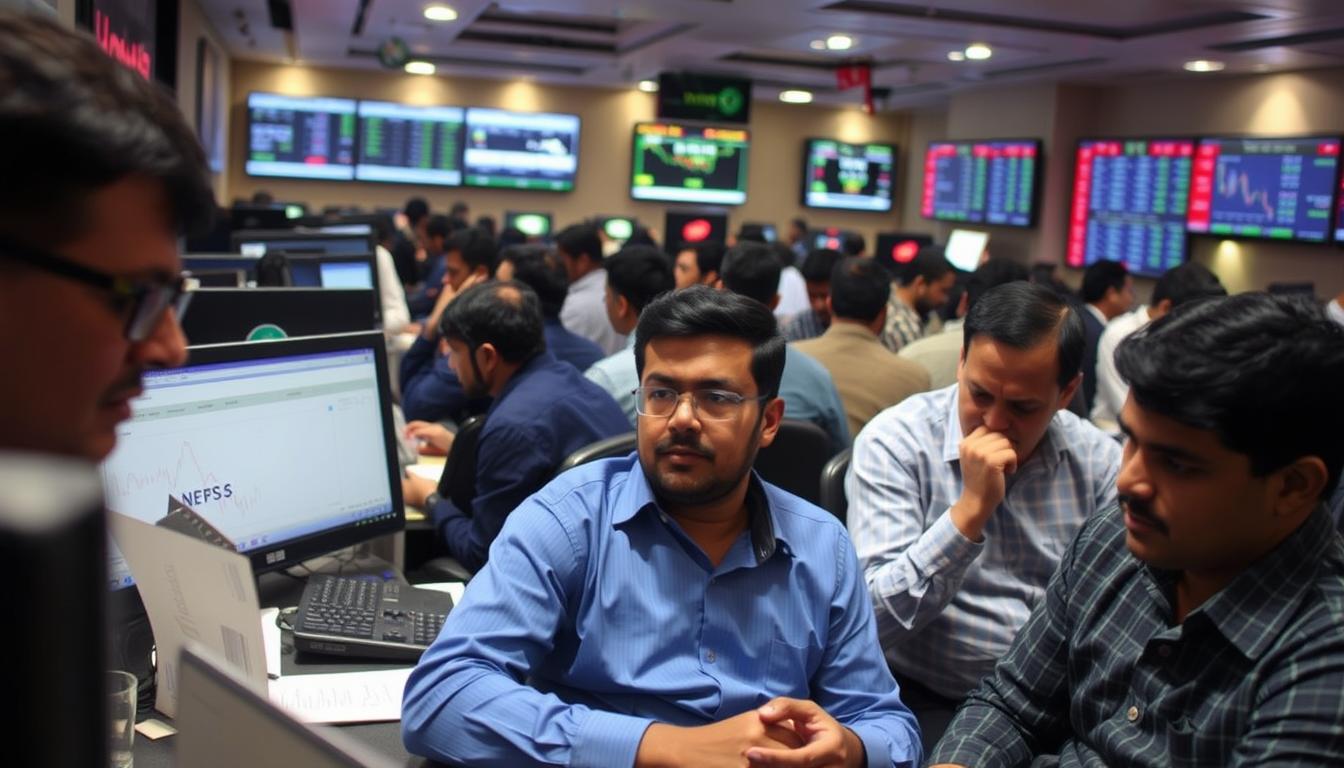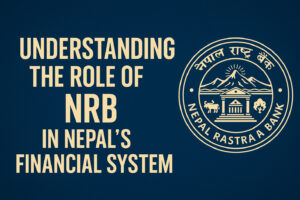The Nepal Stock Exchange, commonly referred to as NEPSE, is the backbone of Nepal’s capital market, facilitating the buying and selling of securities. For beginners, understanding how NEPSE works is the first step towards participating in the country’s vibrant stock market.
As Nepal’s only stock exchange, NEPSE provides a platform for publicly listed companies to raise capital and for investors to buy and sell stocks. This guide will walk you through the basics of stock market trading in Nepal, covering everything from opening a trading account to executing your first trade on the stock market nepal platform.
Key Takeaways
- Understanding the role of NEPSE in Nepal’s financial market.
- Learning the basics of stock market trading.
- Getting started with trading on NEPSE.
- Knowing how to open a trading account.
- Executing your first trade on NEPSE.
Understanding the Nepal Stock Exchange (NEPSE)
Understanding NEPSE is crucial for anyone looking to invest in Nepal’s stock market. The Nepal Stock Exchange, or NEPSE, is the primary stock exchange in Nepal, facilitating the buying and selling of securities.

History and Development of NEPSE
NEPSE was established in 1993 and is headquartered in Kathmandu. Since its inception, NEPSE has played a significant role in Nepal’s financial market, providing a platform for companies to raise capital and for investors to participate in the economy.
Over the years, NEPSE has undergone significant developments, including the introduction of electronic trading systems and other modernizations to enhance efficiency and transparency.
NEPSE’s Role in Nepal’s Economy
NEPSE is instrumental in Nepal’s economic development, facilitating capital formation and providing investment opportunities for Nepali citizens and foreign investors alike.
By enabling companies to raise funds through the issuance of stocks and bonds, NEPSE contributes to the growth of Nepal’s economy. Moreover, NEPSE’s trading activities help in price discovery and provide liquidity to the market.
For individuals looking to invest in NEPSE, understanding its history, development, and role in the economy is essential for making informed decisions about nepse trading and how to invest in nepse.
The Structure of Nepal’s Stock Market
Understanding the structure of Nepal’s stock market is crucial for investors looking to trade on NEPSE. The stock market in Nepal is facilitated by various key participants who work together to ensure smooth trading operations.
Key Market Participants
The key market participants in Nepal’s stock market include investors, stockbrokers, NEPSE, SEBON, and listed companies. Investors are the backbone of the market, providing the capital that keeps the market active. Stockbrokers act as intermediaries between investors and NEPSE, facilitating buy and sell orders.

NEPSE is the platform where trading occurs, while SEBON oversees the regulatory framework to ensure fair trading practices. Listed companies are those whose shares are available for trading on NEPSE, offering investors opportunities to own parts of these businesses.
Regulatory Framework and SEBON
The regulatory framework in Nepal’s stock market is overseen by the Securities Board of Nepal (SEBON). SEBON’s primary role is to protect investors’ interests and maintain fair and transparent markets. It achieves this by setting and enforcing rules and regulations for all market participants.
SEBON’s oversight ensures that NEPSE and other market participants adhere to strict guidelines, promoting a stable and trustworthy trading environment. This regulatory framework is crucial for the growth and development of Nepal’s stock market.
Fundamentals of NEPSE Trading
Understanding the fundamentals of NEPSE trading is crucial for anyone looking to invest in the Nepal Stock Exchange. To get started, new investors must meet certain basic requirements and familiarize themselves with market terminology and trading processes.
Basic Requirements for New Investors
New investors need to open a Demat account to start trading on NEPSE. A Demat account is essential for holding and managing securities in electronic form.
The process involves selecting a registered broker, filling out the required forms, and submitting necessary documents. Investors can then deposit funds into their trading account and begin buying and selling stocks.
Understanding Market Terminology
Familiarity with market terminology is vital for successful trading. Terms such as ‘bull market,’ ‘bear market,’ ‘IPO,’ and ‘scrip’ are commonly used in NEPSE trading.
Trading Cycles and Settlement Process
NEPSE operates on a T+2 settlement cycle, meaning that trades are settled two days after the transaction date. Understanding this cycle is crucial for managing investments effectively.
| Trading Cycle | Settlement Period | Description |
|---|---|---|
| T | Transaction Day | The day on which the trade is executed. |
| T+1 | 1 Day After Transaction | The day after the trade is executed, used for verification. |
| T+2 | 2 Days After Transaction | The settlement day when the transaction is finalized. |
Opening a Demat Account in Nepal
For those new to the Nepal stock market, understanding how to open a Demat account is the first step towards investing in NEPSE. A Demat account is a digital wallet that holds your shares in electronic form, making it a crucial tool for stock market trading.
What is a Demat Account?
A Demat account, or dematerialized account, is a type of account that allows investors to hold their securities in electronic form. It is similar to a bank account but is used specifically for holding shares. To invest in the stock market Nepal, having a Demat account is mandatory.
Step-by-Step Process to Open a Demat Account
Opening a Demat account is a straightforward process. Here are the steps:
- Choose a Depository Participant (DP): Select a registered DP to open your Demat account.
- Fill Out the Application Form: Complete the account opening form provided by your chosen DP.
- Submit Required Documents: Provide the necessary documents, such as your PAN card, citizenship certificate, and proof of address.
- Sign the Agreement: Sign the account opening agreement with your DP.
Required Documents and Fees
The documents required to open a Demat account typically include a PAN card, citizenship certificate, and proof of address. The fees associated with opening and maintaining a Demat account vary among DPs. It’s essential to check with your chosen DP for their specific requirements and charges.
By following these steps, you can easily open a Demat account and start your journey on how to invest in NEPSE.
Setting Up a Trading Account with a Broker
Opening a trading account with a reputable broker is the first step towards actively trading on the Nepal Stock Exchange (NEPSE). This process is crucial for anyone looking to invest in Nepal’s stock market.
How to Choose a Reliable Broker in Nepal
Choosing the right broker is a critical decision for investors. A reliable broker provides not only the necessary trading platform but also valuable market insights and customer support. When selecting a broker, consider factors such as brokerage fees, the user-friendliness of their trading platform, and the quality of customer service.
Account Opening Process and Documentation
The account opening process typically involves submitting required documents, such as a citizenship certificate or passport, proof of address, and a recent photograph. Investors should also be prepared to fill out the broker’s account opening form, which may be available online or in-person.
Understanding Brokerage Fees and Charges
Brokerage fees and charges can significantly impact trading profitability. Investors should understand the fee structure of their chosen broker, including any commissions on trades, account maintenance fees, and other charges. Comparing fees among different brokers can help investors make an informed decision.
By carefully selecting a reliable broker and understanding the associated costs, investors can set themselves up for success in NEPSE trading.
Navigating NEPSE’s Trading Platform
To start trading on NEPSE, it’s essential to familiarize yourself with the Trading Management System (TMS) and its functionalities. NEPSE uses a fully automated electronic trading system, which provides a robust platform for buying and selling stocks.
Overview of the NEPSE Trading System
The NEPSE trading system is designed to facilitate efficient and transparent stock trading in Nepal. It offers various tools and features that cater to the needs of investors, making it easier to participate in the stock market.
TMS (Trading Management System) Features
The TMS is the backbone of NEPSE’s trading operations, offering a range of features that enhance the trading experience. Some of the key features include:
- Real-time market data and updates
- Advanced order management capabilities
- User-friendly interface for ease of navigation
How to Read and Analyze NEPSE Market Data
Understanding NEPSE market data is crucial for making informed investment decisions in Nepal’s stock market. To navigate the market effectively, investors need to comprehend various aspects of market data.
Understanding Stock Symbols and Market Indices
Stock symbols and market indices are fundamental components of NEPSE market data. Stock symbols are unique identifiers for listed companies, while market indices, such as the NEPSE Index, track the overall performance of the market.
Reading Stock Charts and Price Movements
Stock charts display the historical price movements of listed securities. By analyzing these charts, investors can identify trends and patterns that may inform their investment decisions.
Key Market Indicators for Beginners
Beginners should focus on key market indicators such as trading volume, market capitalization, and dividend yield. These indicators provide insights into the market’s overall health and help investors make informed decisions.
| Indicator | Description | Importance |
|---|---|---|
| Trading Volume | Total shares traded in a day | High volume indicates liquidity |
| Market Capitalization | Total market value of a company’s outstanding shares | Helps assess company size and stability |
| Dividend Yield | Ratio of annual dividend payment per share to stock’s current price | Indicates return on investment for dividend-paying stocks |
Step-by-Step Guide to NEPSE Trading
To successfully invest in NEPSE, one must grasp the fundamentals of stock trading. This guide will walk you through the process, making it easier to get started with trading on the Nepal Stock Exchange.
Types of Orders in NEPSE
NEPSE allows investors to place various types of orders, including market orders, limit orders, and stop-loss orders. Understanding these order types is crucial for effective trading.
- Market Orders: Executed immediately at the current market price.
- Limit Orders: Executed at a specified price or better.
- Stop-Loss Orders: Triggered when the stock price reaches a certain level, helping to limit losses.
Process of Buying Stocks
Buying stocks on NEPSE involves selecting the desired stock, choosing the type of order, and executing the trade through a registered broker.
Process of Selling Stocks
Selling stocks follows a similar process. Investors must select the stock they wish to sell, choose the appropriate order type, and execute the sale through their broker.
| Order Type | Execution Price | Use Case |
|---|---|---|
| Market Order | Current Market Price | Immediate Execution |
| Limit Order | Specified Price or Better | Control over Execution Price |
| Stop-Loss Order | Triggered at Specified Price | Limiting Losses |
By understanding these steps and utilizing the best stock trading platform, investors can navigate NEPSE with confidence.
Major Sectors and Companies in NEPSE

The Nepal Stock Exchange (NEPSE) is dominated by several key sectors that offer a range of investment opportunities. These sectors are crucial to understanding the dynamics of NEPSE trading and the overall stock market in Nepal.
Banking and Financial Institutions
The banking sector is one of the most significant contributors to NEPSE. Major banks such as Nepal Investment Bank, Nabil Bank, and Standard Chartered Bank are among the top performers. These institutions play a vital role in Nepal’s economy, and their performance on NEPSE is closely watched by investors.
Hydropower and Energy Sector
The hydropower sector has gained considerable attention in recent years due to Nepal’s vast hydroelectric potential. Companies like Upper Tamakoshi Hydropower and Nepal Hydroelectric Company are prominent players in this sector. Investing in hydropower companies can be lucrative, given the government’s focus on renewable energy.
Insurance and Manufacturing Companies
Insurance companies, such as Nepal Life Insurance and Rastriya Beema Company, also have a significant presence on NEPSE. Additionally, manufacturing companies, including those in the cement and textile industries, offer investment opportunities. These sectors contribute to the diversity of NEPSE, allowing investors to spread their risk.
Investment Strategies for Nepali Stock Market
Investing in the Nepali stock market can be a rewarding experience with the right strategies. Investors can choose from various approaches to suit their financial goals and risk tolerance.
Long-term vs. Short-term Investment Approaches
Investors in NEPSE can adopt either long-term or short-term investment strategies. Long-term investing involves holding stocks for an extended period, typically benefiting from capital appreciation and dividend payouts. In contrast, short-term trading focuses on exploiting market fluctuations to generate quick profits.
Sector-based Investment Strategies
Focusing on specific sectors can be an effective way to invest in NEPSE. The Nepali stock market includes various sectors such as banking, hydropower, and manufacturing. Investors can choose sectors that are likely to grow based on market trends and economic conditions.
Dividend-focused Investing in Nepal
Dividend-focused investing involves selecting stocks that pay consistent dividends. This strategy can provide a regular income stream and is often favored by investors seeking stable returns. In NEPSE, investors can look for companies with a history of paying dividends to build a stable portfolio.
By understanding and implementing these investment strategies, investors can enhance their chances of success in NEPSE trading. Whether focusing on long-term growth, sector-based opportunities, or dividend income, a well-informed approach is key to navigating the Nepali stock market effectively.
Taxation and Legal Considerations for NEPSE Investors
Understanding the tax implications of investing in NEPSE is crucial for investors. As they navigate the Nepal stock market, investors must comply with various tax regulations to maximize their returns.
Capital Gains Tax on Stock Trading
Investors in NEPSE are subject to capital gains tax on their stock trading activities. The tax rate varies depending on the duration of the investment, with long-term gains typically being taxed at a lower rate.
Dividend Taxation
Dividends received from NEPSE-listed companies are also subject to taxation. Investors should be aware of the tax rates applicable to dividend income to optimize their investment strategies.
Compliance Requirements for Investors
NEPSE investors must comply with various regulatory requirements, including filing tax returns and maintaining accurate records of their transactions. Compliance is essential to avoid penalties and ensure a smooth investment experience in the Nepal stock market.
Conclusion: Your Path Forward in Nepal’s Stock Market
Navigating Nepal’s stock market can seem daunting, but with the right knowledge, you can confidently start your trading journey. NEPSE provides a platform for investors to grow their wealth, and understanding how to invest in NEPSE is the first step towards achieving your financial goals.
As you’ve learned, nepse trading involves more than just buying and selling stocks. It requires a comprehensive understanding of the market, including key sectors, investment strategies, and regulatory considerations. By following the steps outlined in this guide, you’re well on your way to becoming a savvy investor.
To succeed in NEPSE trading, it’s essential to stay informed about market developments and continuously educate yourself on the best investment practices. With the right mindset and knowledge, you can capitalize on the opportunities available in Nepal’s stock market.
Now that you have a solid foundation, take the next step and start exploring the world of NEPSE trading. Open a demat account, choose a reliable broker, and begin your investment journey today.





